Editor’s Note: We’re excited to introduce a new column from Life & Thyme contributor, Nicole Gulotta. In a quest to de-clutter her cabinets, Nicole is cooking her way through her dried spice collection. Throughout the series, she’ll develop recipes inspired by long-forgotten ingredients, and explore how the world of spices, and her own memories, can enhance every meal.
I’ve recently discovered that curating your spice cabinet is not unlike purging your closet.
Once you remove all the clothes you no longer wear and a few hangers are left bare, less clutter equals more clarity. And as it turns out, this is true in the kitchen as well.
In the spirit of spring cleaning, I’ve recently made an effort to address the long drawer next to my oven where my spice collection stands at attention. One afternoon I placed everything on the counter and threw away the oldest spices: a pinch of Mexican oregano left inside a crumpled bag, a canister of ground cloves from several Christmases ago, and an unlabeled bag of curry powder, all tossed into the trash bin.
Now the shelves are less cluttered, and what remains is a more streamlined collection of ingredients to incorporate into my meals. At least, this is the hope. The transformation process isn’t fully complete yet, I’ll admit. There are several glass jars from The Container Store, stuck with stickers on top to identify what rests inside. A few spices rest in small bags from the bulk bin at Whole Foods, and there are still several small, green paper boxes of spices I should put into larger jars. Said boxes are often stacked two or three high, so I occasionally make the mistake of buying duplicates.
But all progress is good. Now that I can see the ingredients at my disposal, it’s simply a matter of calling on them one at a time, and being open to what I might discover along the way.
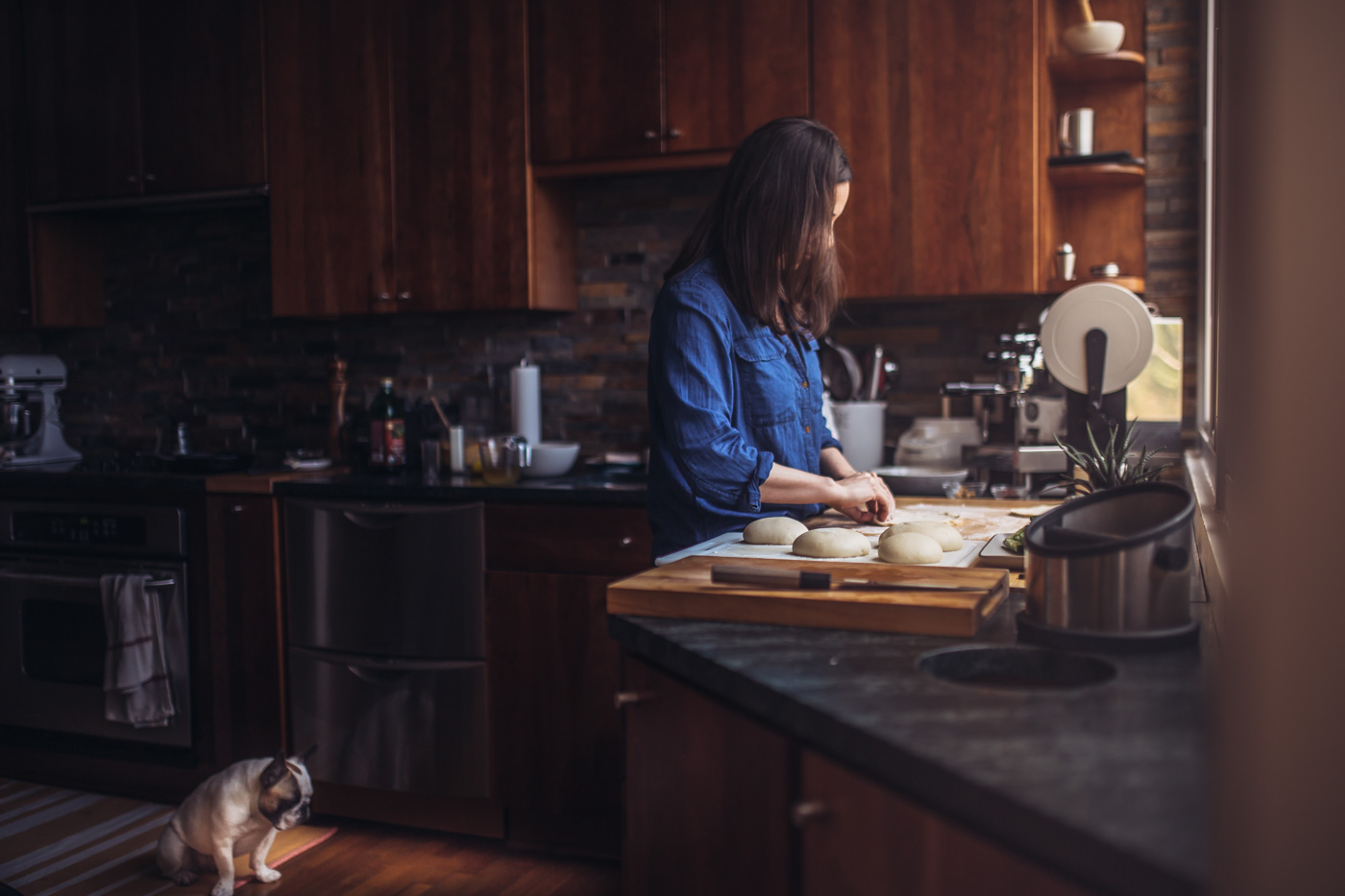
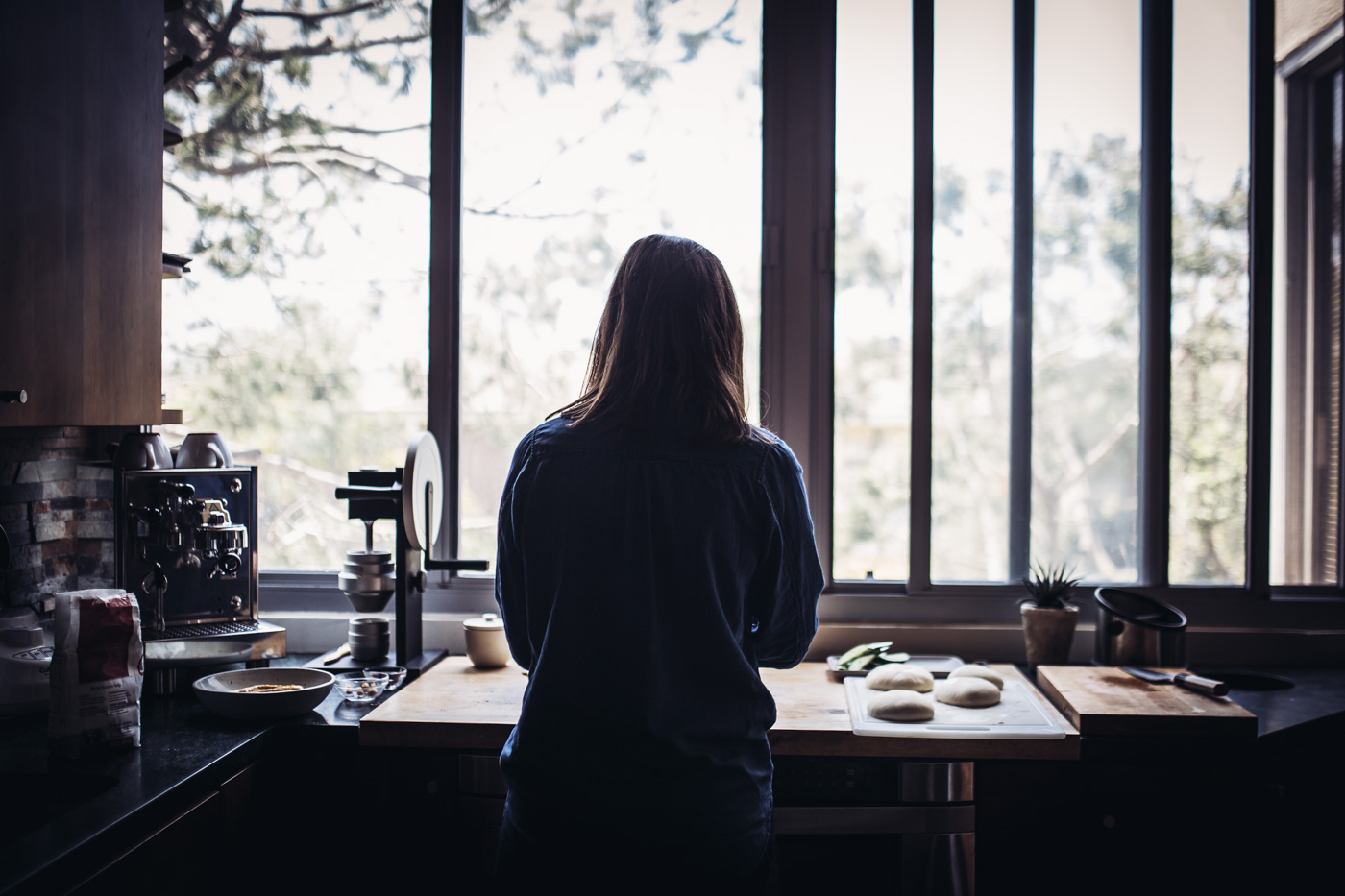

Sometime last summer I poured myself a glass of iced tea and sat in a chair all afternoon reading David Lebovitz’s latest cookbook, My Paris Kitchen. Much of his daily cooking in France is influenced by middle eastern flavors, and a spiced meatball dish piqued my interest. The recipe listed sumac, a spice I hadn’t cooked with before, so I tossed a package into my shopping cart during my next visit to the store.
The meatballs were tender and laced with bold flavors like fennel, paprika and harissa, but once our meal ended, so did my use of sumac. Since then, the container has languished in my cabinet, unused, which is an unfortunate destiny for such a beautiful spice.
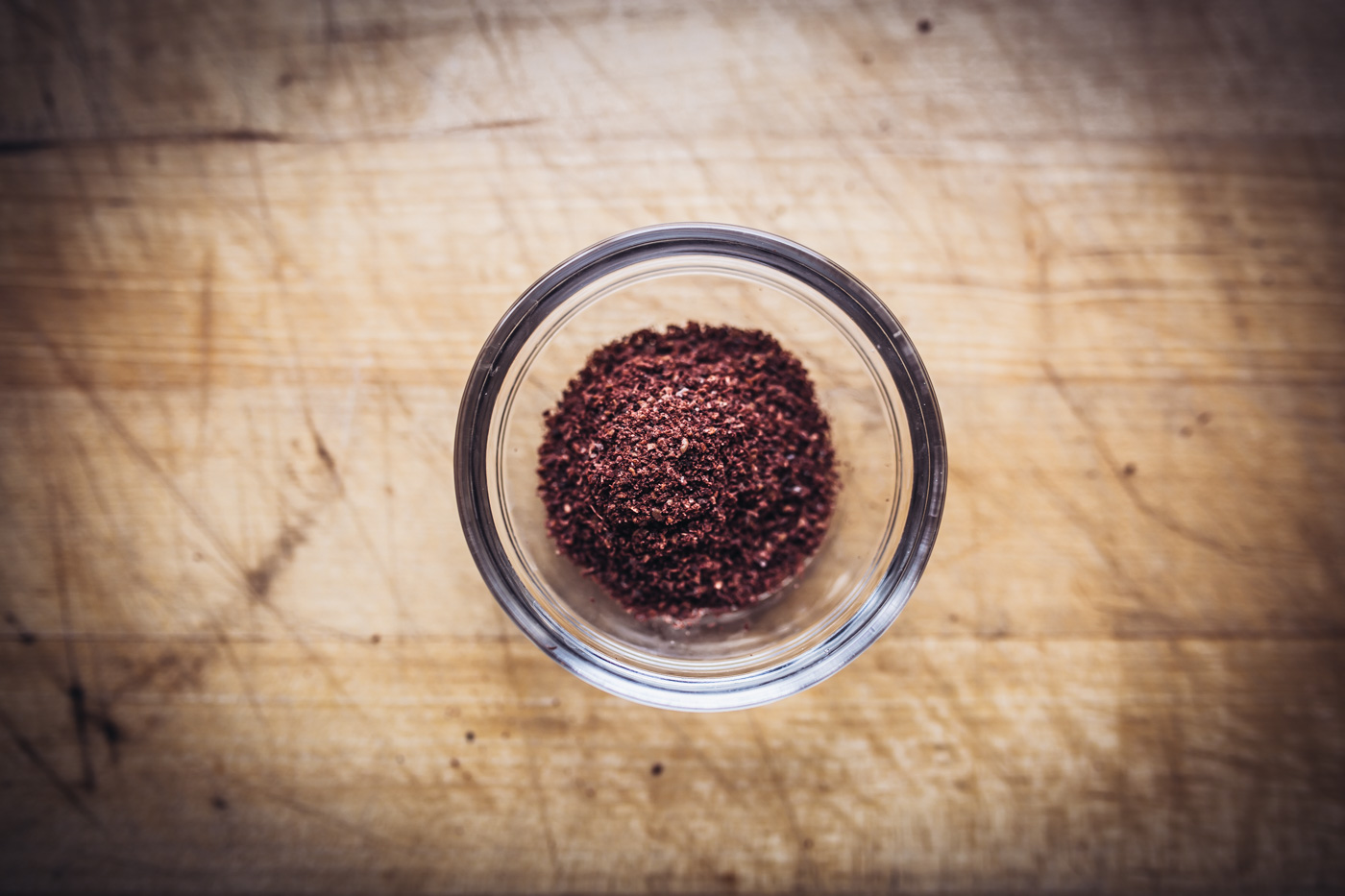
With a fragrance reminiscent of lemon peel, and a deep, rusty red color, sumac certainly doesn’t need to convince me of its virtue. Ground into a powder from small, red berries, sumac is commonly found in dry rubs and marinades, but shines best when used to finish dishes or sprinkled over food just before serving.
To honor its middle eastern roots, I boiled chickpeas to make a creamy hummus complemented by the golden flesh of a sweet potato. And to serve alongside sliced cucumber or carrots, homemade flatbread is brushed with olive oil infused with sumac and crushed garlic. On a smoking grill, the dough puffs and rises before being torn into pieces, still hot, nearly burning the fingers of anyone who touches it.
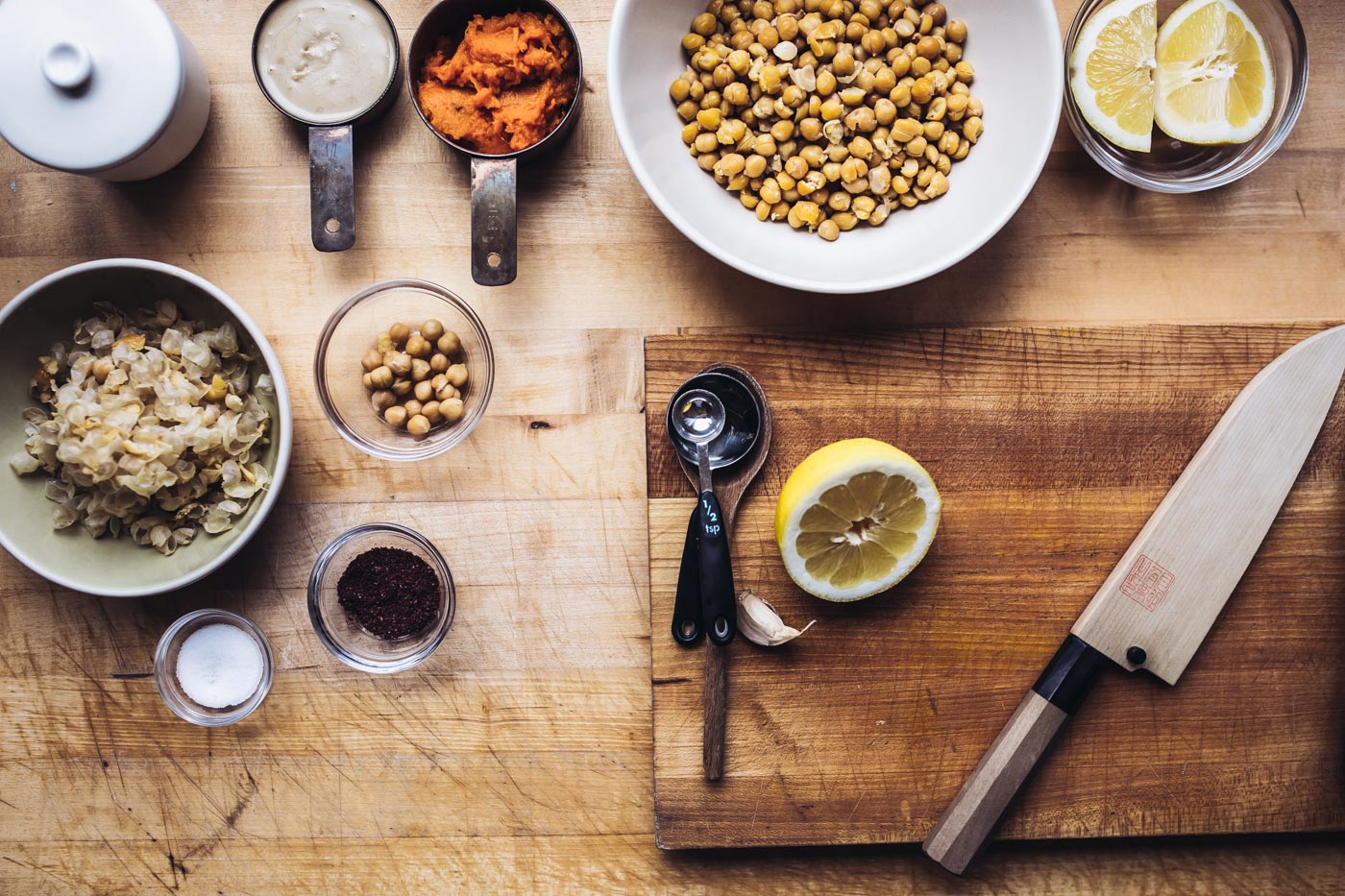
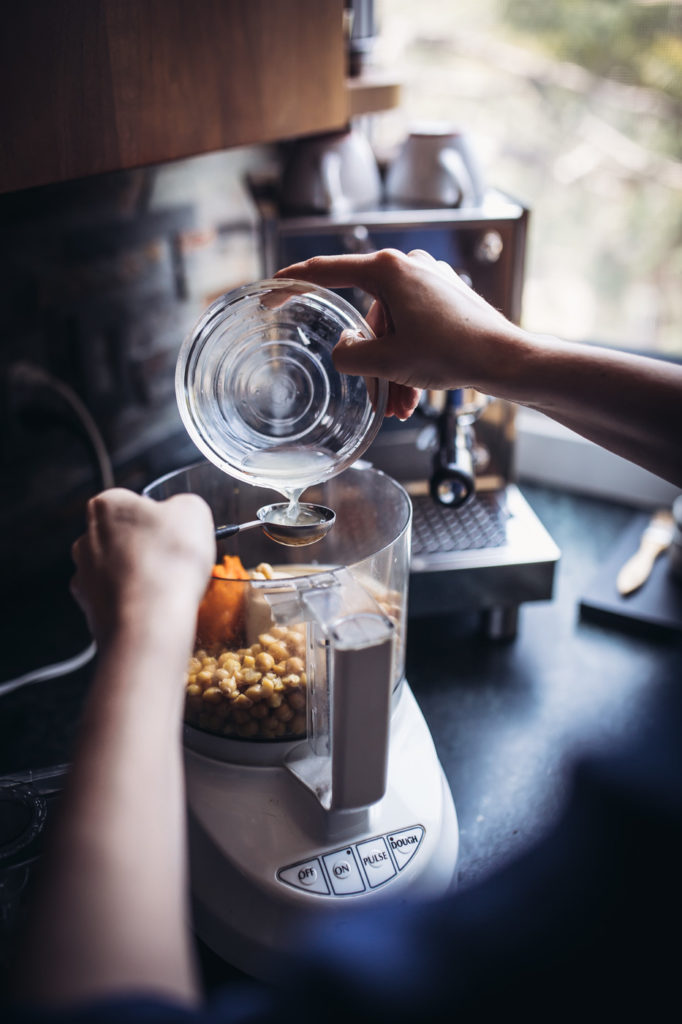
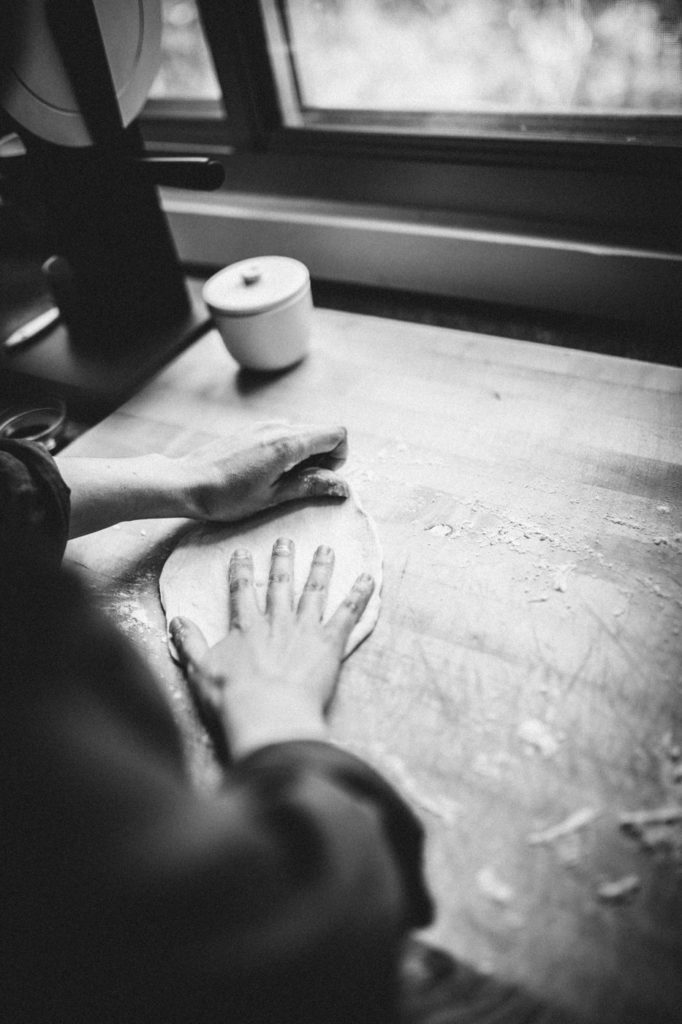
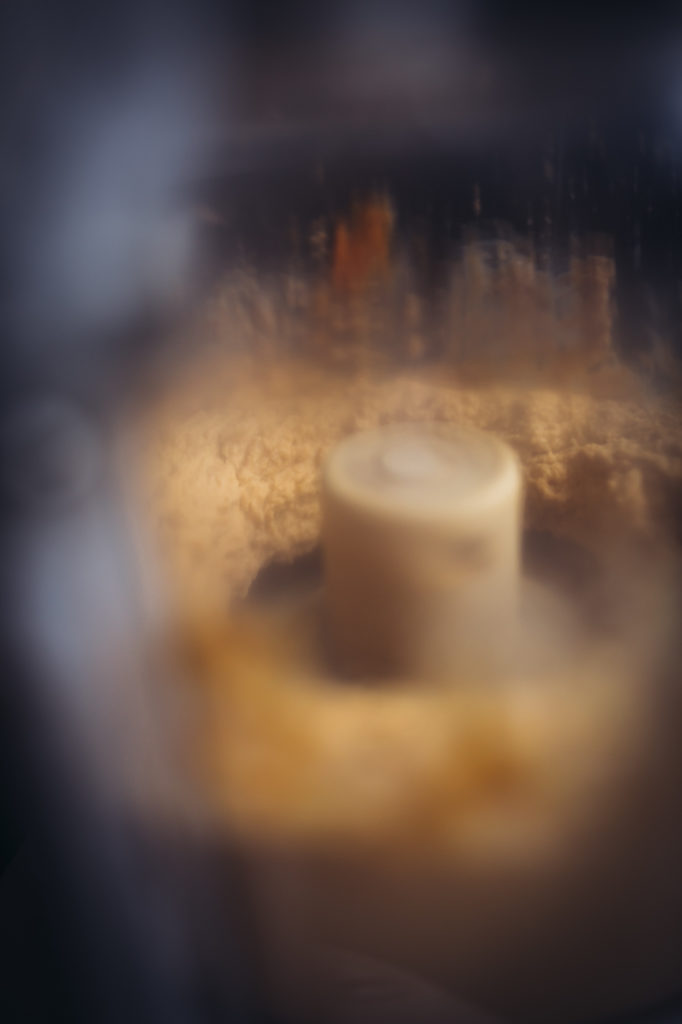

Sweet Potato Hummus
In addition to anchoring a mezze platter alongside flatbread, crisp cucumbers and grilled vegetables, hummus makes wonderful spread for sandwiches, like turkey and avocado. And although a somewhat laborious extra step, peeling the chickpeas before pureeing makes for the most ethereally smooth hummus.
Serves 4
- 2 small sweet potatoes
- 2 cups cooked garbanzo beans (or 1 15-ounce can; rinsed, drained, and peeled)
- ½ cup tahini
- ¼ cup lemon juice
- 2 tablespoons extra-virgin olive oil, plus more for drizzling
- 1 garlic clove
- 1 ½ teaspoons salt
- Water, for thinning
- pinch of sumac
Preheat oven to 400°F. Scrub the sweet potatoes and prick them several times with a fork. Place on a foil-lined baking sheet and roast until tender, about 1 hour. When cool enough to handle, peel off the skins and place the flesh into a medium bowl; mash with a fork.
Add 1 cup potato puree to the bowl of a food processor (save any extra for another use), along with the garbanzo beans, tahini, lemon juice, olive oil, garlic and salt. Process until very smooth, about 3 to 5 minutes, scraping down the sides of the bowl a few times. Thin with a bit of water, 1 tablespoon at a time.
Serve at room temperature, with a drizzle of oil and a sprinkle of sumac. Hummus will keep in the refrigerator for up to 4 days.
Sumac and Garlic Flatbread
With no mozzarella or tomato sauce in sight, pizza dough transforms into an addictive flatbread.
Makes 6
- 3 cups all-purpose flour
- 2 teaspoons yeast
- 2 teaspoons salt, plus more for sprinkling
- 2 tablespoons extra-virgin olive oil, plus more for bowl
- 1 to 1 ½ cups warm water
For the oil
- ¼ cup extra-virgin olive oil
- 1 ½ teaspoons sumac
- 1 teaspoon grated garlic (from about 2 large cloves)
Place the flour, yeast and salt in the bowl of a food processor and pulse once or twice to combine. With the motor running, add the olive oil, then stream in the water very slowly (you may not need it all). Only continue adding water until the dough has come together in a mass.
Turn the dough out on a lightly floured surface and knead until smooth. It will take a bit of work with your wrists, at least 5 minutes. (Alternatively, this process can be done in a stand mixer and kneaded with a dough hook.)
Oil a large bowl and ease the dough inside; cover with plastic wrap or drape a kitchen towel over the top. Let the dough rise for 45 minutes to 1½ hours, or until it has doubled in size. Once risen, cut the dough into six equal pieces and shape into balls. Let them rest, covered, on a floured cutting board for about 15 minutes before shaping.
To prepare the infused oil, add the oil to a small bowl along with the sumac, then grate in the garlic; stir to combine.
Heat a large cast iron skillet to medium-high heat. One at a time, press each piece of dough into a large, thin circle. Brush one side with a bit of oil, then place, oiled side down, into the hot pan. Cook for 2 to 3 minutes, or until bubbling. Brush on a bit more oil before flipping, then continue cooking for 1 to 2 minutes more; repeat process with remaining dough. Let cool slightly before pulling into pieces.
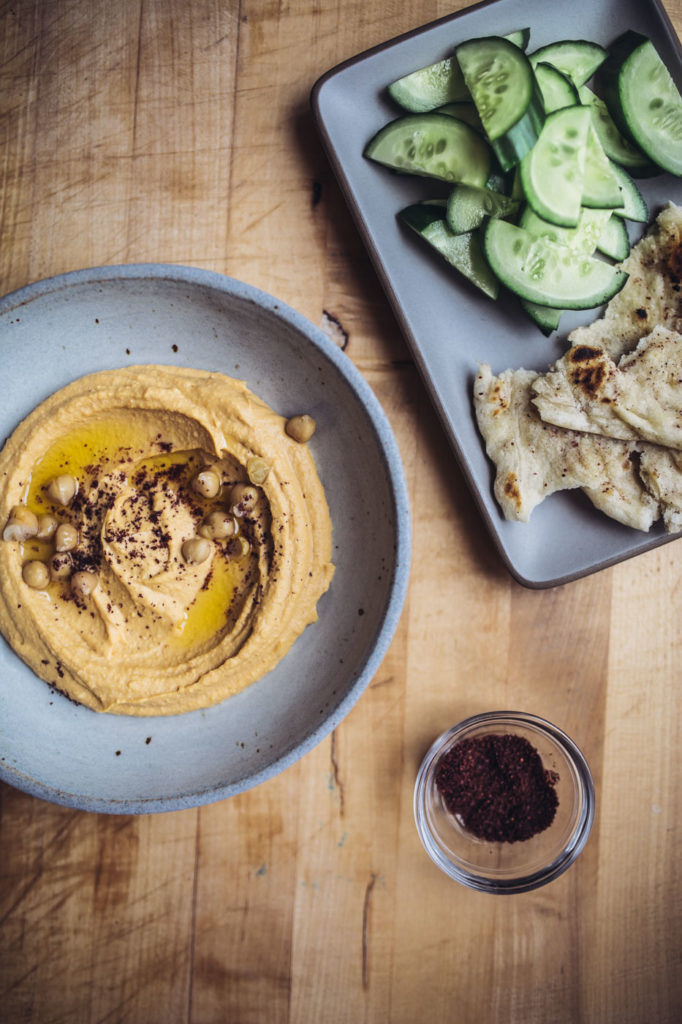
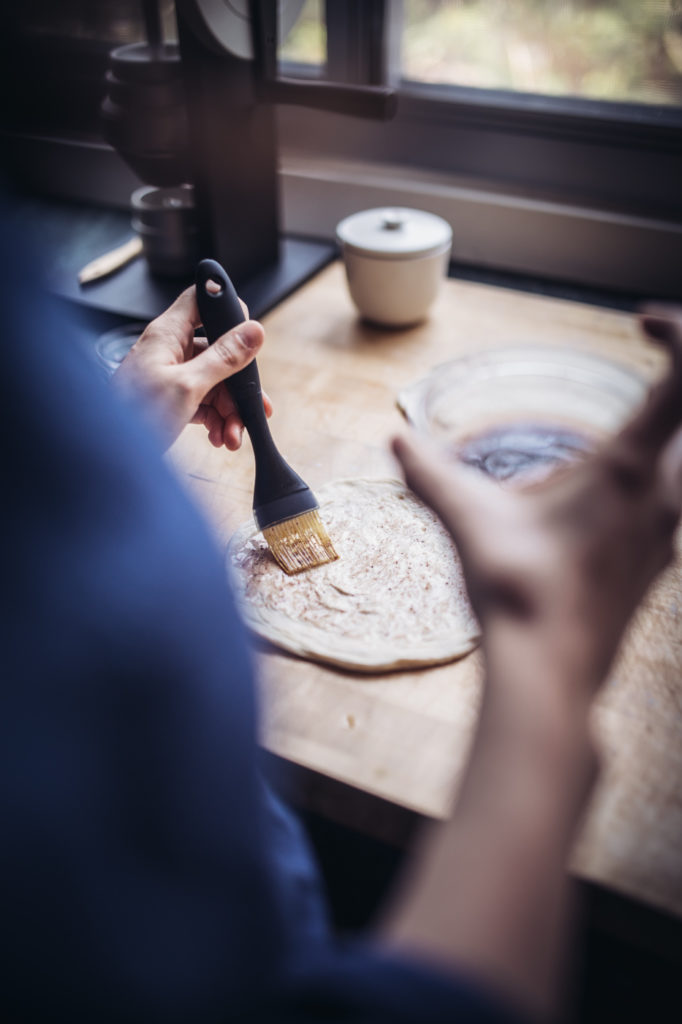





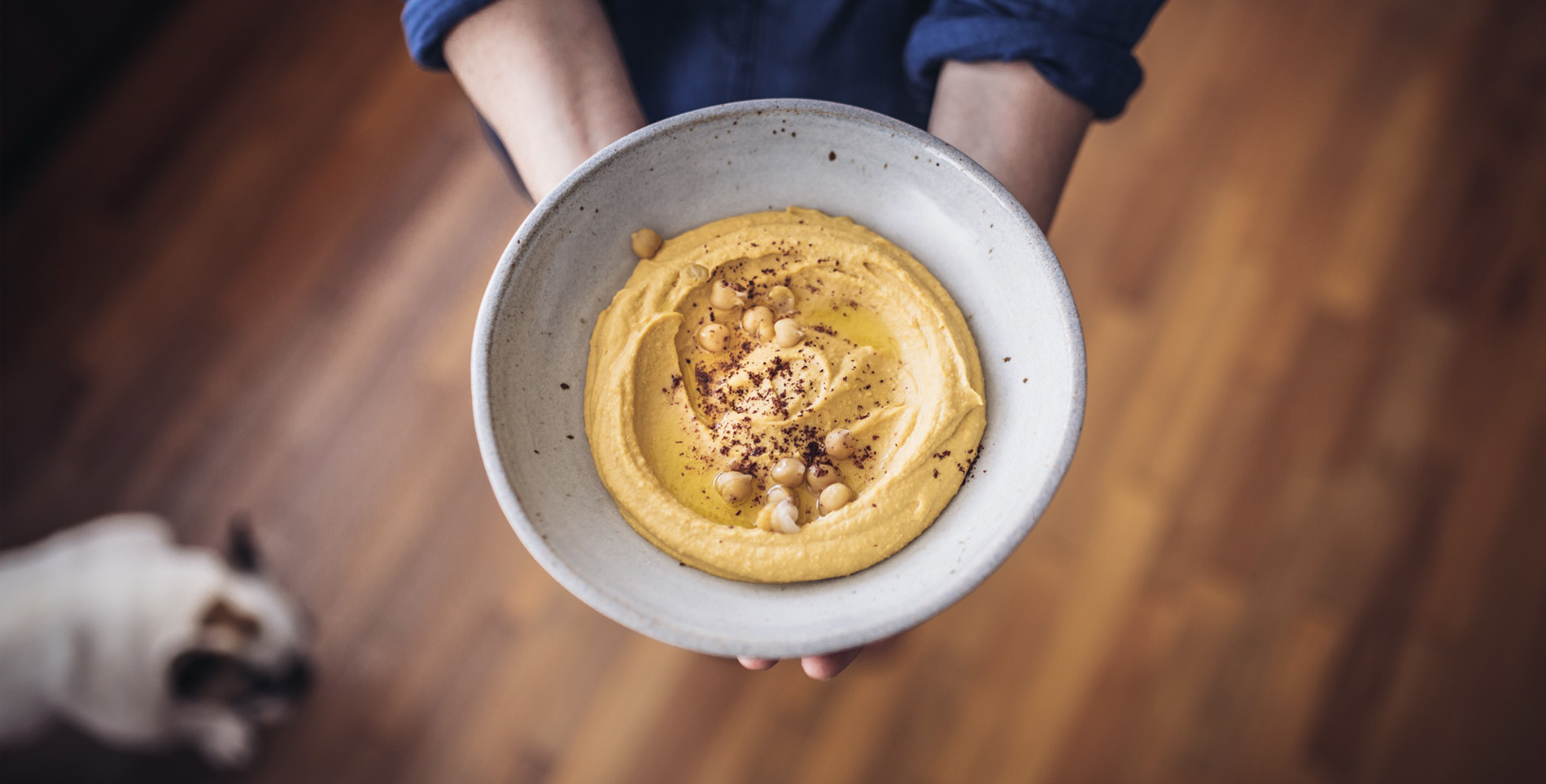

Our comments section is for members only.
Join today to gain exclusive access.